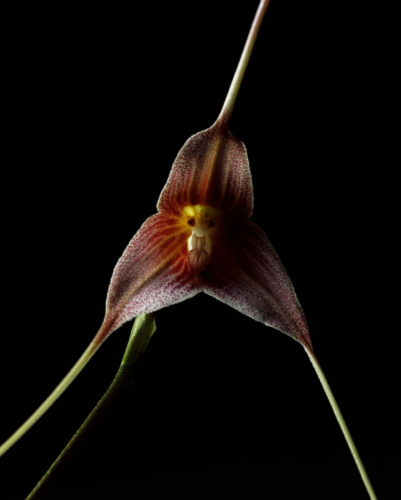
Dracula dalstroemii
María Luisa, her husband, Luis Carlos, and their daughters, Mar and Sol, had embarked on a journey to protect one small corner of this fragile world by restoring a mountain landscape that supports native orchids and their pollinators.
Over the course of nearly two decades, the slopes of María’s mountain transformed. Butterflies had returned. Bees had returned. . .
I paused to take in the life pulsing around us—María Luisa and Mar appeared both lithe and almost otherworldly in this light, standing on this verdant land that had once been dead. They themselves seemed orchid-like, able to pull sustenance from the air around them.
The Forest of Orchids
By Heather Swan, Emergence Magazine, May 27, 2021
Audio and transcript: https://emergencemagazine.org/essay/the-forest-of-orchids/
As Colombia continues to suffer violence and unrest, one family seeks to change the country’s story from one of destruction to one of restoration and healing by planting thousands of native orchids across a mountainside.
To him who keeps an Orchis’ heart –
The swamps are pink with June.
—Emily Dickinson
Hidden in the verdant mountain forests of Colombia, among trees threaded with the flights of tanagers, iridescent hummingbirds, and a vast array of butterflies and bees, are some of the most seductive, aromatic flowers in the world: cattleya orchids.
Cattleyas are known for their alluring scents and voluptuous, colorful blossoms and are sought by orchid lovers around the world.
At an international exhibition in 1936, Colombians presented a Cattleya trianae––named after the Colombian naturalist José Jerónimo Triana––as a symbol of their country, and it has remained the national flower ever since.
The country is home to over four thousand types of orchids, which have flourished there for centuries, but today, in part because of their popularity and in part because of environmental destruction, at least 50 percent of these native orchids are endangered.
I confess I had some fears when I landed in the mountain city of Bogotá on a misty October night.
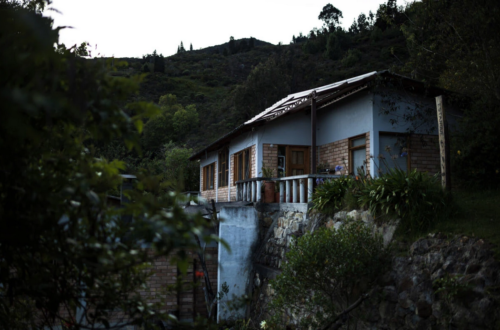
Main house at Forest of Orchids reserve.
It was the fall of 2019, and I had traveled to this Andean city to meet a family of self-proclaimed orchid addicts.
My images of this country had been shaped by both fact and fiction.
To many people living in the United States, the mention of Colombia in the past few decades has conjured images of traffickers, guns, and suitcases full of cocaine under a thick canopy of trees—stories the media tends to highlight.
Although I had close Colombian friends, this was my first experience of this land.
When I arrived, a cab took me through the busy streets of Bogotá to the neighborhood where I would be staying.
The tips of the Andes––dark giants at the edges of the city––stood watch.
This did not seem like a country that had suffered a violent, fifty-year war and complex problems from drug trafficking.
In 2016, three years earlier, a peace accord had been signed, and the country was still trying to heal.
Many Colombians, like the family I was headed to meet, were working to change their country’s story.
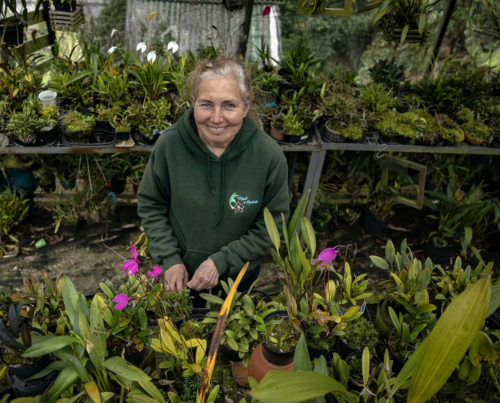
María Luisa working at the Forest of Orchids greenhouse
I knew those mountains held much more than coca plantations and guerrilla fighters, though I admit I still felt some trepidation.
However, that night I dreamt not of violence and bloodshed, but of forests, tangles of towering dark trees and flowering vines, singing with lyrical nonhuman voices.
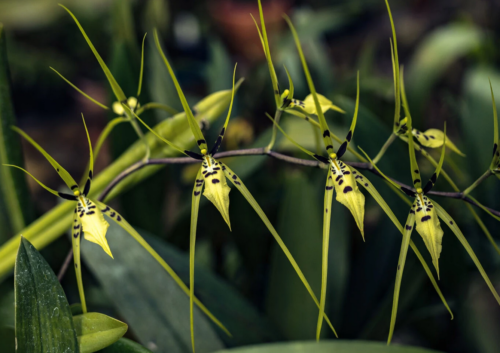
Brassia antherotes
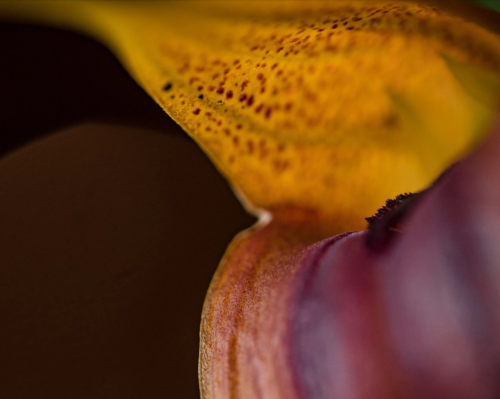
Detail of Masdevallia velifera.

